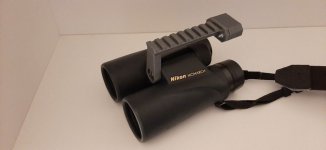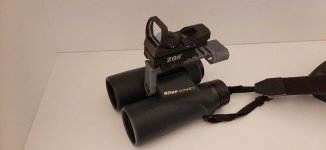Hi again,
Here's my print:

It seems to give a at least a slight improvement in steadiness. I'll have to give it a more thorough test, I guess. With the shoulder stock, the improvement was immediately evident, so I would say the headrest alone is less effective than the shoulder stock.
Here's a secondary benefit of the headrest:

I'm not entirely serious about this secondary application, but when I was printing, I thought, "Hey, why not!"! ;-)
Regards,
Henning
I haven't tried a head brace yet, but it should be a fairly simple thing to design a 3D printable one that screws into the tripod thread of the Nikon pictured above ...
Here's my print:

It seems to give a at least a slight improvement in steadiness. I'll have to give it a more thorough test, I guess. With the shoulder stock, the improvement was immediately evident, so I would say the headrest alone is less effective than the shoulder stock.
Here's a secondary benefit of the headrest:

I'm not entirely serious about this secondary application, but when I was printing, I thought, "Hey, why not!"! ;-)
Regards,
Henning





